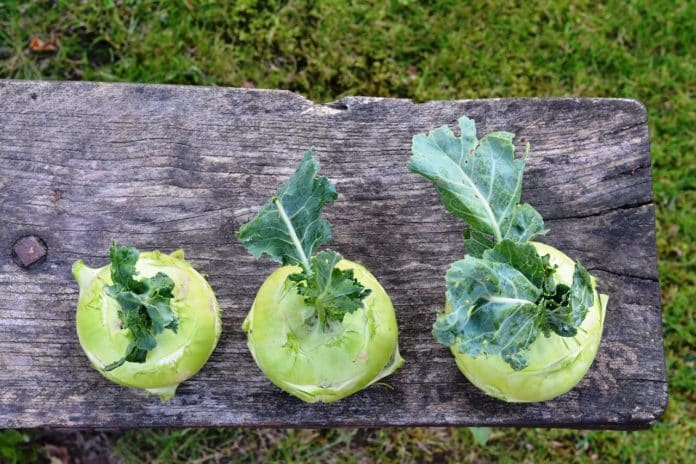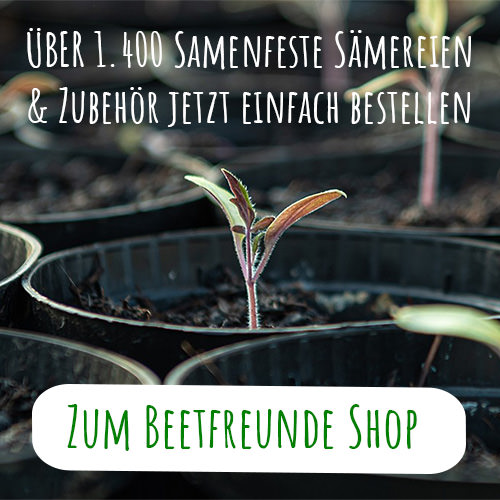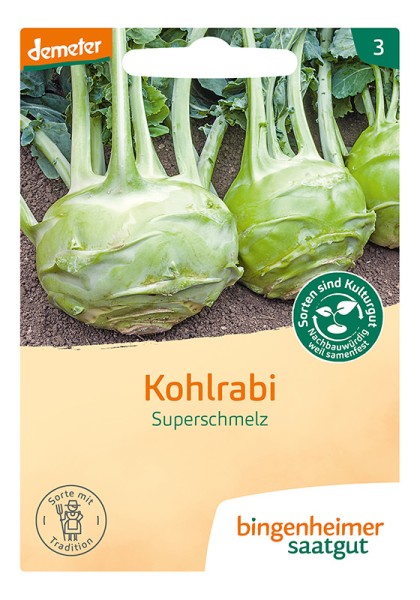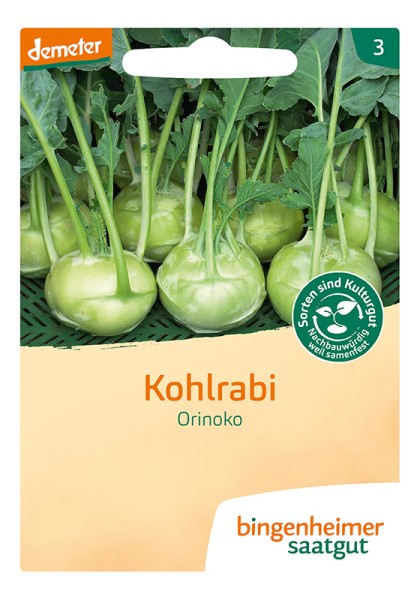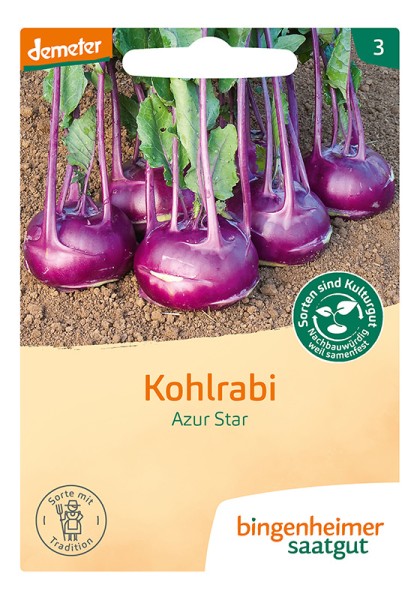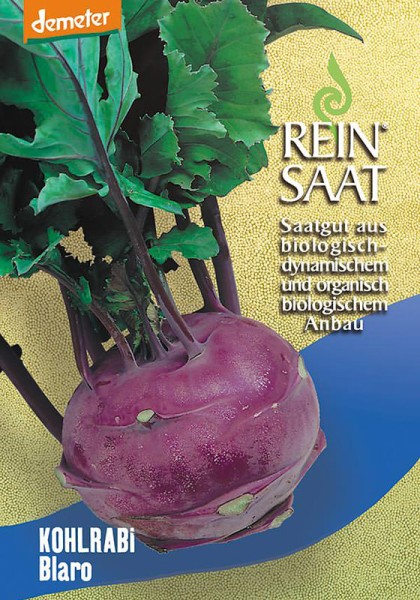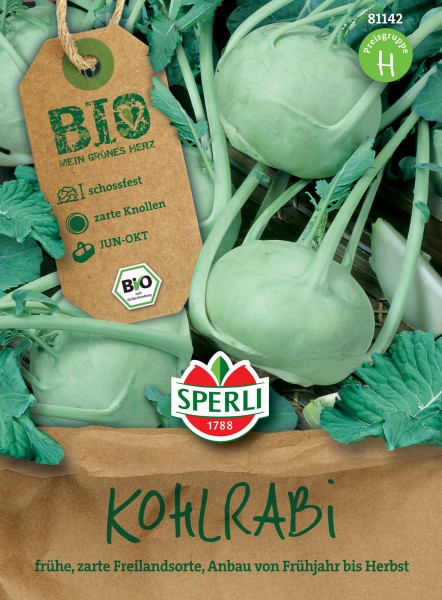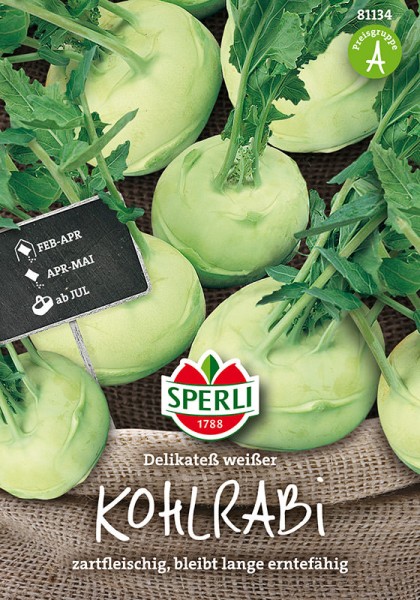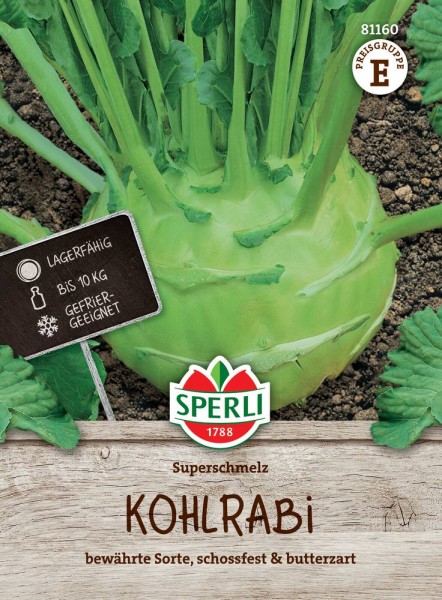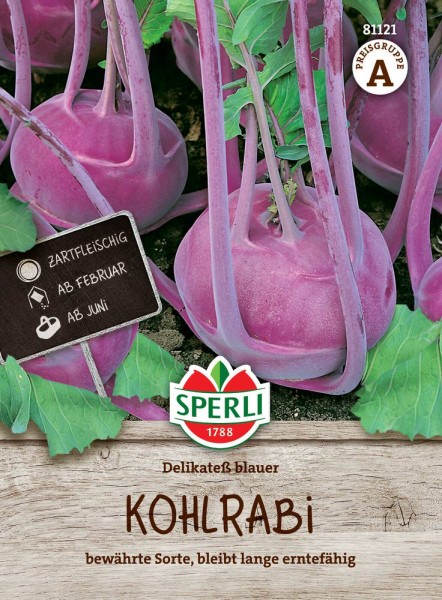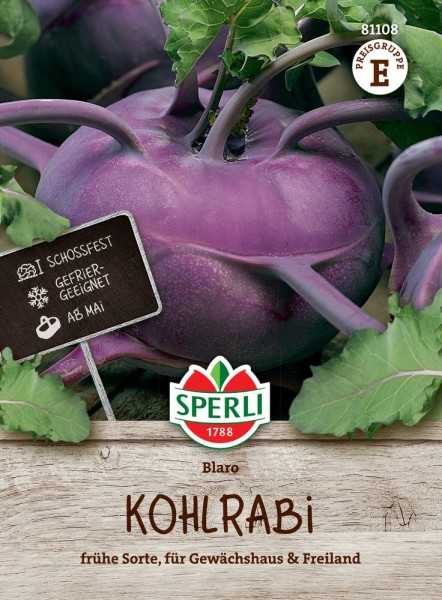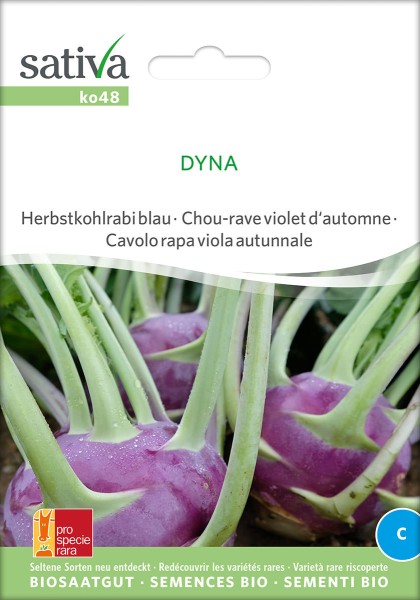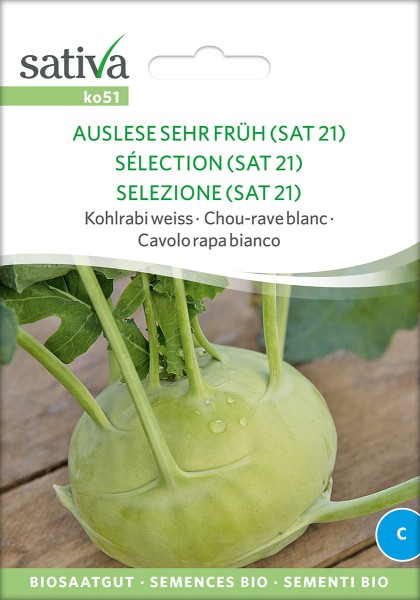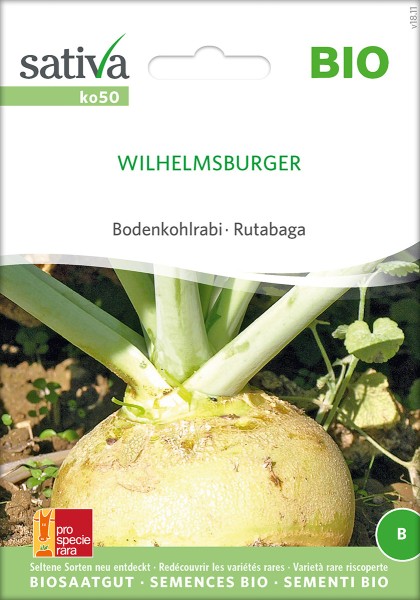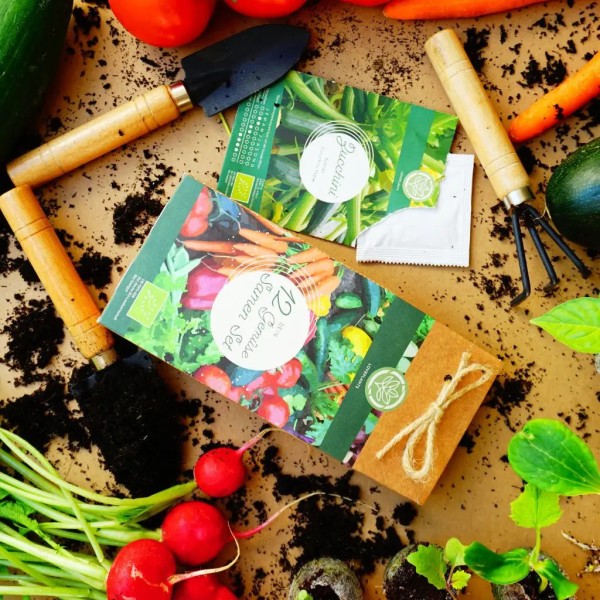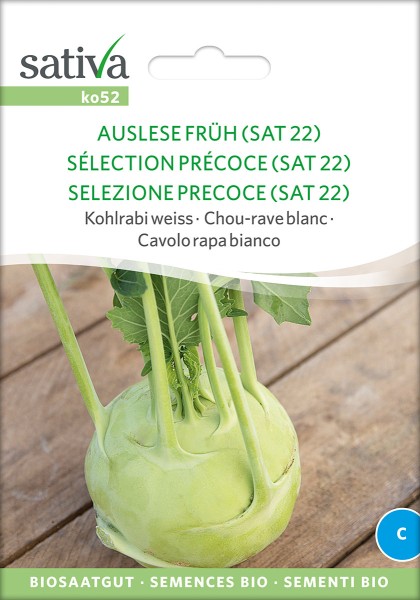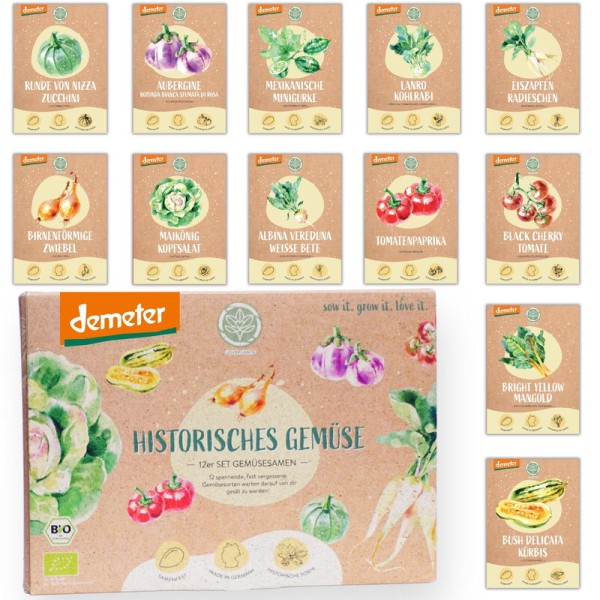Kohlrabi (Brassica oleracea var. gongylodes) is a tasty, fast-growing vegetable that will fit into even the smallest garden. It lasts all season long; it’s one of the few plants you can plant early in the spring and harvest into autumn. Not only can you eat the tender tubers raw or steamed, you can also eat the young leaves!
Kohlrabi Varieties
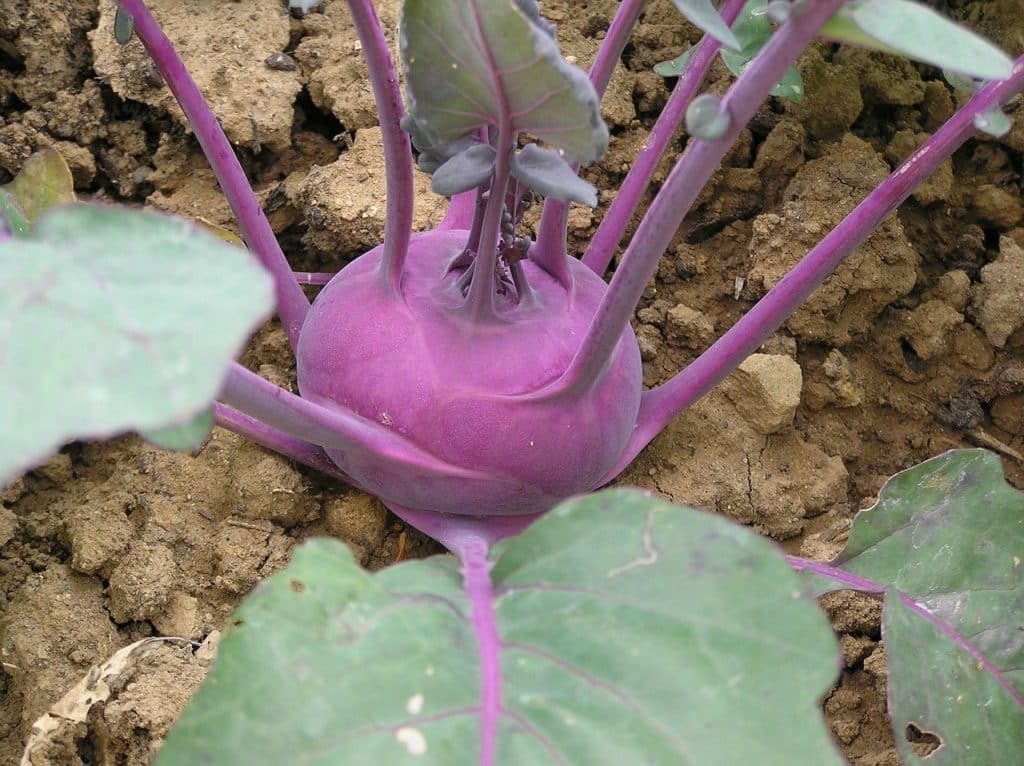 Kohlrabi belongs, like kale, cauliflower, or white cabbage, to the cabbage family. Basically, a distinction is made between early and late varieties on the basis of their sowing and harvesting times. However, there are now also many varieties of kohlrabi that can be grown throughout the season. Plants with light green to almost white tubers and green leaves are the most common in this country. A classic is the Superschmelz variety; its yield can weigh several kilos, and yet it remains very tender! If you prefer a bit more color, there is also kohlrabi with blue-violet-veined leaves and shells, such as Azur Star and Blaro. Their tubers grow and ripen more slowly, but taste even more tender than the white ones.
Kohlrabi belongs, like kale, cauliflower, or white cabbage, to the cabbage family. Basically, a distinction is made between early and late varieties on the basis of their sowing and harvesting times. However, there are now also many varieties of kohlrabi that can be grown throughout the season. Plants with light green to almost white tubers and green leaves are the most common in this country. A classic is the Superschmelz variety; its yield can weigh several kilos, and yet it remains very tender! If you prefer a bit more color, there is also kohlrabi with blue-violet-veined leaves and shells, such as Azur Star and Blaro. Their tubers grow and ripen more slowly, but taste even more tender than the white ones.
Kohlrabi Sowed
Kohlrabi is one of the spring vegetables. You can start early varieties inside as early as February. Sow the seeds about one centimetre deep and place them in a bright, warm place. Kohlrabi needs temperatures between 16 and 20 degrees Celsius to germinate. When the first cotyledons are visible, you should keep the seedlings slightly cooler, but at least twelve degrees Celsius warm, so that they do not sprout. Thin them out if you have sown too densely.
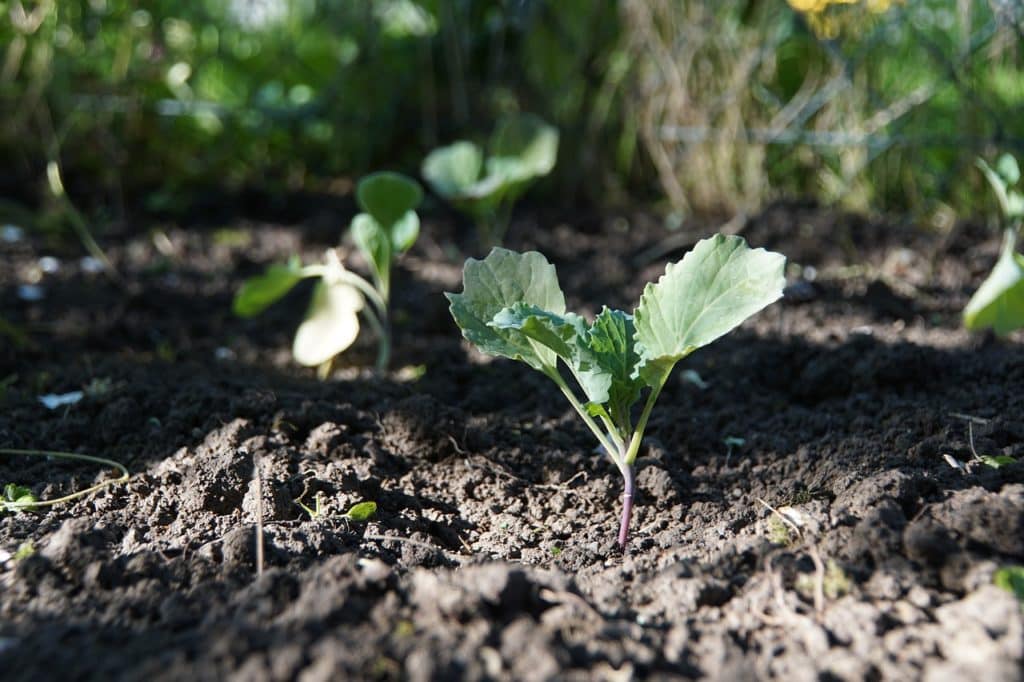
A the end of March, the young plants can move outdoors and are best protected by a fleece at the beginning. Do not set the plants too low, otherwise the tuber will develop poorly or not at all. The distance between the individual plants should be about 30 to 40 centimetres. Later varieties can be sown directly into the bed as a catch crop until the beginning of August, when space becomes available. Exceptions are cruciferous plants. For these, you should observe a cultivation phase of at least three years.
Location and Maintenance
Kohlrabi probably is native to our latitudes, and therefore flourishes in the local climate. It prefers a bright, sunny location, but can also thrive in semi-shade. Since the plant forms a tap root, the soil should be permeable and not too heavy.
Other than that, Kohlrabi is less demanding than the other members of the brassica family. It belongs to the moderate eaters, needs less nutrients, and does not need additional fertilization. However, you should water the plants evenly; if they do not get enough water, the tubers become woody. If you water them too much, they burst open. Young kohlrabi plants are often eaten by snails, late varieties by white cabbage caterpillars. From time to time, the plants can also get mildew. However, the cabbage hernia is far more problematic; it affects not only kohlrabi, but all cruciferous plants. You should therefore wait at least three years before growing plants from this family in the same place again. Kohlrabi may tolerate slight frost. If you do not harvest the tuber, the plant will flower in the second year. The numerous yellow flowers attract many insects in spring.
Harvesting, Use, and Conservation
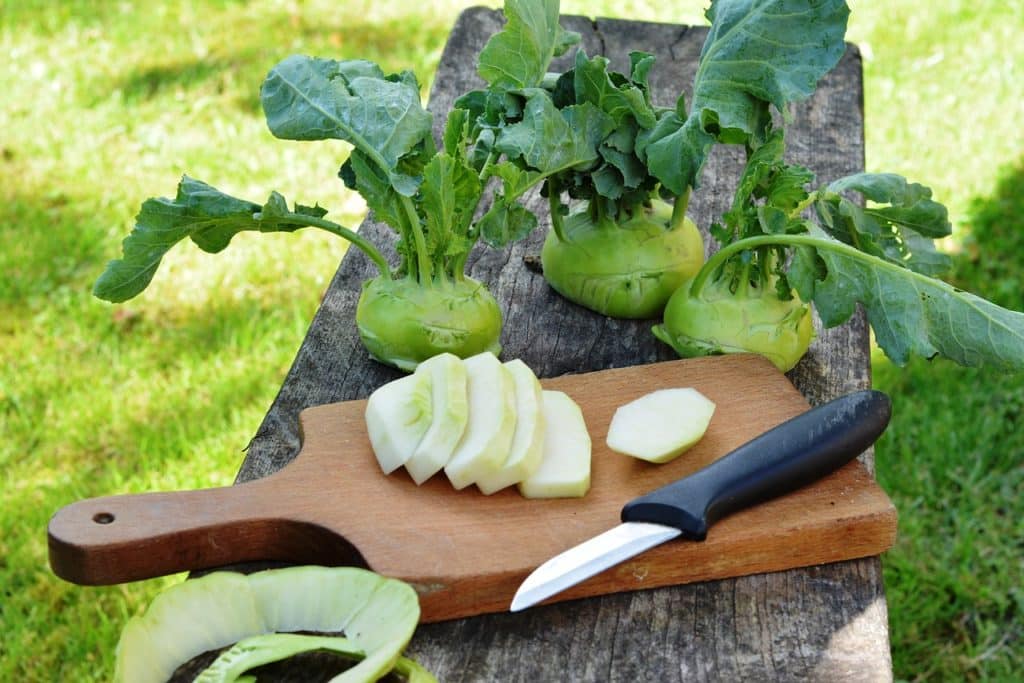
In contrast to other cabbage plants such as kale or cauliflower, kohlrabi leaves and flowers cannot be harvested, just the thickened stalk. The tuber is ripe about two to three months after planting – it is tenderest when it is not fully grown. For harvesting, pull the plant out of the ground and separate the stalk from the root with a sharp knife. Don’t throw the leaves away; you can still use them with early and mid-late varieties. From a nutritional point of view, they are considered to be even more valuable than cabbage because they contain more protein and healthy ingredients. The kohlrabi tuber can be shaved uncooked into salads or eaten raw. You can also prepare it as a side dish, bake it, and use it for soups and stews. Young leaves can be eaten raw in salads, larger ones like spinach and cabbage rolls. Fresh and young kohlrabi tastes best. You can also blanch and freeze it. Late varieties can be stored in a cool place for a longer period of time.

